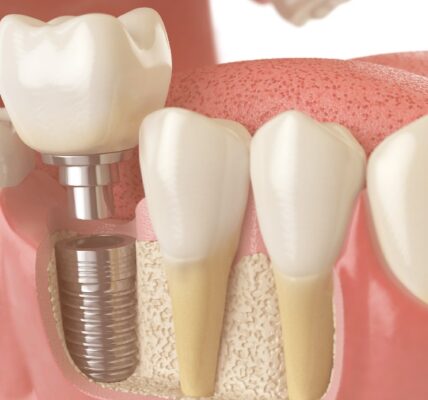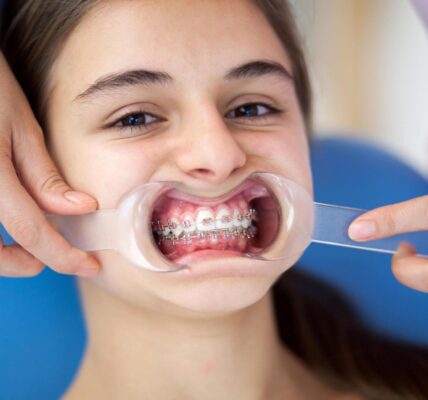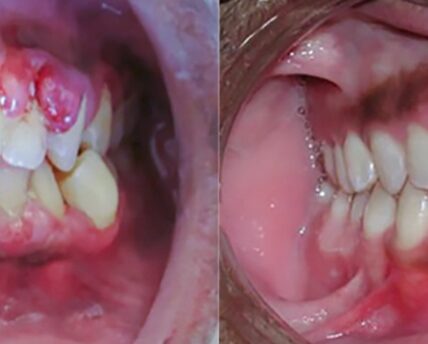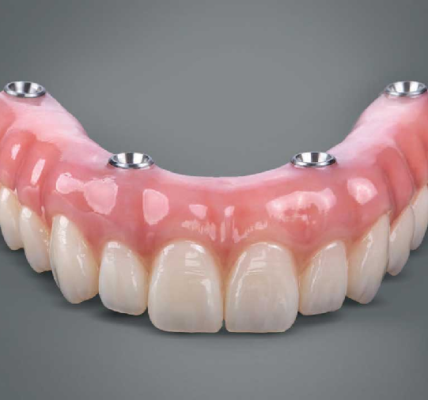If you’re anxious about going to the dentist, or if you need extensive dental work done, you might have heard of sleep dentistry or sedation dentistry. This approach can help patients relax during their dental procedures, often making it possible to complete multiple treatments in one session. But the question remains: Can multiple dental procedures be done in a single sleep dentistry session?
The short answer is yes—multiple dental procedures can often be completed in one session of sleep dentistry. However, there are several factors that determine how many procedures can be performed safely and effectively during one visit. In this article, we’ll dive into what sleep dentistry is, how it works, the types of procedures that can be combined, and important considerations to ensure you’re getting the best care for your dental needs.
What is Sleep Dentistry?
Sleep dentistry, also known as sedation dentistry, involves using medication to help patients relax or fall asleep during dental procedures. While the term “sleep dentistry” suggests that patients are fully asleep, this is usually not the case. Most sedation methods used in sleep dentistry will keep patients relaxed or in a light sleep-like state, rather than fully unconscious, but they still won’t be aware of or remember the procedure.
The goal is to reduce anxiety and discomfort, making dental procedures more tolerable, particularly for patients who need extensive work or suffer from dental phobia.
Types of Sedation Used in Sleep Dentistry
There are different types of sedation used in sleep dentistry, each with varying levels of depth. Here’s an overview of the main types:
- Nitrous Oxide (Laughing Gas): This is the mildest form of sedation, where you breathe in nitrous oxide mixed with oxygen. It makes you feel relaxed and light-headed, but you remain fully awake and aware. It’s often used for shorter or less invasive procedures.
- Oral Sedation: This is usually a pill or liquid taken before the procedure. It induces a deeper state of relaxation, but you remain conscious and responsive. Some people may feel drowsy or even fall asleep, though they can be awakened easily.
- IV Sedation: For deeper sedation, an intravenous (IV) sedative is administered directly into the bloodstream. It allows the dentist to control the level of sedation more precisely, putting the patient in a relaxed or semi-conscious state. Many people remember little to nothing about the procedure afterward.
- General Anesthesia: This is the deepest form of sedation and involves putting the patient into a state of controlled unconsciousness. It’s typically reserved for complex procedures or when a patient is undergoing multiple procedures at once.
How Does Sleep Dentistry Work?
Sleep dentistry works by delivering sedative medications that help manage pain and anxiety, making dental work easier for both the patient and the dentist. Depending on the procedure and the level of sedation chosen, the dentist may monitor your vitals, including heart rate, blood pressure, and oxygen levels, to ensure safety.
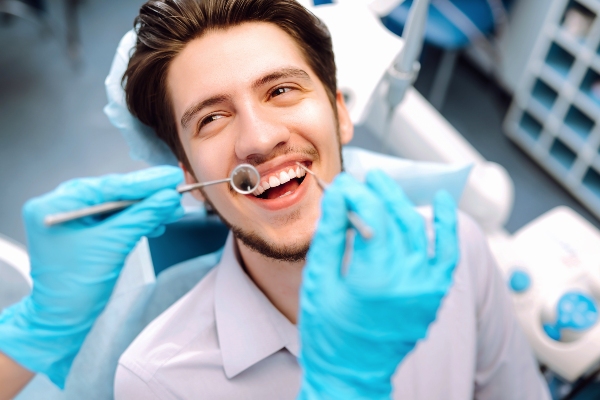
The sedation allows the dentist to perform a range of procedures while the patient is relaxed, calm, or completely unaware of the work being done. This is especially beneficial for patients who experience extreme dental fear or need a lot of work done at once.
What Procedures Can Be Done in a Single Sleep Dentistry Session?
When it comes to multiple dental procedures, sleep dentistry can often help you get them all done in a single visit. Here are some of the common procedures that can be performed together:
- Dental Cleanings: For patients with dental anxiety or who need a deep cleaning (scaling and root planing), sedation can help them get through the procedure comfortably.
- Fillings and Restorations: If you have multiple cavities or require fillings, sleep dentistry can allow the dentist to address several teeth at once.
- Root Canals: A root canal is a lengthy procedure, but with sedation, the dentist can perform it on multiple teeth in one visit if necessary.
- Extractions: If you need several teeth removed (such as wisdom teeth or decayed teeth), sedation can make the process smoother and less stressful.
- Crowns, Bridges, and Veneers: For extensive restorative work, sedation can allow for the preparation of multiple teeth for crowns or other restorative treatments.
- Implants: If you’re getting dental implants, multiple implants can sometimes be placed in a single session, depending on the complexity of the case.
- Gum Treatments: For patients needing deep periodontal treatment or gum surgery, sleep dentistry can help manage discomfort and anxiety during the procedure.
Essentially, any procedure that can be done in a dental office and doesn’t require a hospital setting can be combined into one sedation dentistry session, as long as it’s safe to do so.
Benefits of Combining Multiple Dental Procedures in One Session
There are several benefits to having multiple dental procedures completed in a single sleep dentistry session:
- Reduced Anxiety: Having several procedures done at once can reduce the anxiety of multiple dental visits. You’ll only have to undergo the stress of anesthesia and recovery once.
- Convenience: Completing multiple procedures in one visit saves time and reduces the number of dental appointments you need to schedule, especially if you have a busy life.
- Fewer Appointments: For those with severe dental needs, combining treatments can reduce the overall number of visits to the dentist, meaning less disruption to your schedule.
- Cost-Effective: In some cases, combining procedures may reduce the overall cost of treatment by eliminating the need for additional appointments and administrative fees.
Factors That Influence Whether Multiple Procedures Can Be Done at Once
While combining multiple procedures in one session is often possible, several factors can impact whether it’s safe or practical:
- Complexity of Procedures: If the procedures are very complex or invasive, it may not be advisable to do them all in one visit. The dentist will assess your medical history and the specifics of the treatment to ensure that the session will be manageable.
- Duration of the Procedures: Some dental treatments can take a long time. A single session typically lasts between 1 to 4 hours. If multiple procedures will take longer than this, it might require splitting them into two sessions for safety and comfort.
- Patient Health: Your overall health is a critical factor in determining how much dental work can be done at once. Patients with certain health conditions may not be candidates for extended sedation or lengthy sessions.
- Sedation Options: The type of sedation being used also plays a role. If you’re using a lighter form of sedation, the dentist might need to schedule more frequent sessions. Deeper sedation options, like general anesthesia, may allow for more procedures in a single visit.
How Long Can a Sleep Dentistry Session Last?
Most sleep dentistry sessions typically last between 1 and 4 hours. However, if multiple complex procedures are being performed, the session could last longer. For procedures that require more time, the dentist might recommend splitting the treatments into two visits to ensure you are comfortable and safe throughout.
If you are having several lengthy procedures done, the dentist will discuss how long the session will be and whether it’s advisable to break it up into multiple appointments.
Are There Risks to Sleep Dentistry?
While sleep dentistry is generally safe when performed by a trained professional, it’s important to understand the risks involved:
- Sedation Risks: As with any form of sedation or anesthesia, there are inherent risks, such as allergic reactions, breathing issues, or heart complications. This is why a detailed medical history and careful monitoring are essential.
- Over-Sedation: Too much sedation can lead to complications, which is why it’s important for the dentist to choose the appropriate level of sedation and monitor you throughout the procedure.
- Recovery Time: After deep sedation or general anesthesia, you’ll need time to recover before resuming normal activities. It’s also important to have someone accompany you to and from the appointment if you are undergoing deeper sedation.
What to Expect After Sleep Dentistry
After the sedation wears off, you might feel groggy or tired, and your mouth may be sore depending on the procedures performed. Most people recover from sedation fairly quickly, but you should plan to rest for the rest of the day. Your dentist will provide post-operative care instructions, including tips for managing any discomfort and ensuring proper healing.
Cost of Sleep Dentistry for Multiple Procedures
The cost of sleep dentistry varies widely based on the procedures being performed, the type of sedation used, and the length of the session. On average, you can expect to pay more for sedation compared to regular dental visits. However, combining multiple procedures in one session may help reduce the total cost by eliminating the need for multiple appointments.
Insurance coverage may vary depending on the procedures being done and the type of sedation, so it’s important to check with your provider ahead of time.
Frequently Asked Questions (FAQs)
1. Can I get multiple dental procedures done at once with sleep dentistry?
Yes, you can have several dental procedures done in one session, depending on your specific needs and the complexity of the treatments.
2. How long can a sleep dentistry session last?
Most sleep dentistry sessions last 1-4 hours, but longer sessions are possible if needed. The dentist will discuss the timing with you based on your treatment plan.
3. Is sleep dentistry safe?
Yes, sleep dentistry is generally safe when performed by an experienced dental professional. Your medical history will be reviewed to ensure you’re a good candidate for sedation.
4. How much does sleep dentistry cost for multiple procedures?
Costs vary based on the sedation type and procedures being performed. Combining treatments can reduce overall costs compared to scheduling multiple visits.
5. Do I need someone to accompany me after sleep dentistry?
Yes, if you’re undergoing deeper sedation, it’s important to have someone drive you home and assist you while you recover.
Conclusion
Sleep dentistry can be an excellent solution for patients who need multiple dental procedures done at once, especially those who experience dental anxiety or have complex dental needs. With the right sedation and careful planning, it’s often possible to complete several treatments in a single visit, saving time, reducing stress, and making dental care more comfortable. Always consult with your dentist to discuss your needs and determine whether this approach is suitable for your situation.



